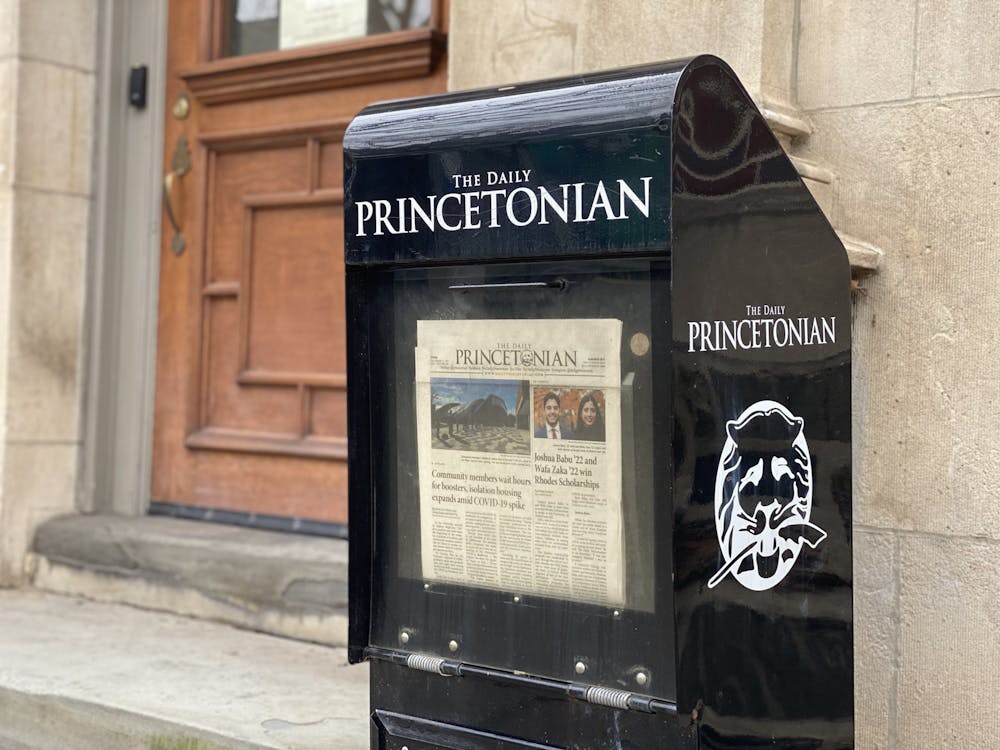Princeton’s dual history as an athletic as well as academic powerhouse is well-documented. Like its fellow Ivy League schools, Princeton promotes the coupling of these two fields, aiming to foster great minds and physical fitness among its students. It’s no wonder that the Department of Athletics underGary Walters ’67has adopted “Education through Athletics” as its slogan, since the former is considered an integral part of the latter. At the very least, Princeton’s academic requirements speak to this commitment.
One would imagine that a look through Princeton’s archives would reveal the same desire to match academic excellence with athletic prowess. However, a look back to 1966 uncovers an interesting and potentially embarrassing moment in the history of Princeton (and the Ivies as a whole). That year, the NCAA created the 1.6 Rule —that is, only athletes able to maintain a GPA of 1.6 or more (C- average or above) were permitted to receive athletic scholarships, and those below 1.6 were considered ineligible to play.
On the surface, it seems that this issue has little to do with Princeton and the other Ivies at all —colleges that don’t award athletic scholarships of any kind. However, Princeton’s Athletic Director R. Kenneth Fairman and President Robert Goheen saw the matter rather differently. Goheen (who was also head of the Ivy League’s Presidents’ Policy Committee at the time) and the other Ivies refused to comply with the NCAA’s new rule, asking instead that the measure be thrown out. Though doing so would prevent their high-performing athletics programs from competing in NCAA championships, the Ivies decided not to capitulate.
When asked why Princeton refused to comply with this relatively low standard, Fairman deemed the whole affair “simply a matter of principle.” Their pride forced the men of Princeton to miss out on competing on the highest stage of collegiate athletics.
So began a prolonged struggle between the NCAA and the Ivies. A measure designed to enforce the principles that these universities hold dear (in the present, at least) caused a rift that couldn’t be mended for well over a year. Despite Fairman’s assertion that Princeton should “be liberal” about the academic standing of its athletes, can a school that prides itself on the academic performance of its students allow itself to be liberal in such a way? Especially when the school’s allowance of such a liberty has an immediate and painful effect on its student-athletes (in this case, the sudden termination of their seasons and months of toil and effort to get that far)?
It’s worth noting that in athletic powerhouses of other regions, the adherence to the student-athlete concept was laughable. It’s easy to understand the NCAA’s desire to curb the blatant misuse of athletic scholarships by any means necessary (even by a rather paltry academic standard) to reemphasize the “student” in “student-athlete.” However, Goheen’s belief that “an athletic organization should [not] seek to determine academic policy” was a notion dangerous to the integrity of college sports. It was all well and good for Goheen and the other Ivy League presidents to say such things, coming from places renowned for more than just their athletic performance. But not every university can be so fortunate. From a practical standpoint, doesn’t it make sense for a university that prides itself primarily on sports to go out and recruit the best athletes that they can find and let less than stellar transcripts go unnoticed?
The burden, therefore, lay on Princeton to support the NCAA’s endeavor, not for its own sake, but for the sake of collegiate athletics as a whole. On any given issue, the opinions of officials at Princeton carry a significant amount of gravitas, and to come out against this measure by the NCAA was, in a sense, to implicitly approve of the shady recruiting tactics other schools were employing. That is, a university should have the right to recruit athletes who may not perform their duties as students. Dan Jenkins of Sports Illustrated, writing on the conflict at the time, correctly stated that “one would hope that [the rule] would not only be kept, but strengthened. A change in the Ivy attitude would do much to enhance that league’s great traditions and give truer meaning to college sport.”
Not until February 1967 would the issue be resolved and the Ivy League once again be permitted to compete in NCAA championships. This lapse, however, does serve as a learning opportunity. As one of the world’s preeminent universities, Princeton’s actions set a standard for others to follow, and it is best to “encourage better educated athletes throughout the nation.”







